Scottish economic bulletin: October 2023
Provides a summary of latest key economic statistics, forecasts and analysis on the Scottish economy.
This document is part of a collection
Labour Market
The labour market has softened slightly with a pick-up in unemployment accompanying further slowing in recruitment activity.
Employment, Unemployment and Inactivity
- Labour market conditions in Scotland and the UK as a whole have been very tight over the past eighteen months and have been resilient in the face of subdued GDP growth and inflationary pressures. This has been characterised by low unemployment, strong demand for labour with elevated vacancy rates and some companies reporting staffing shortages.
- Latest LFS data for May to July indicates that Scotland's labour market may have slightly softened. Unemployment rose by 37,000 over the quarter, with the unemployment rate rising to 4.3% (same as UK). However, this coincided with a rise in the employment rate (to 75.1%) and a fall in economic inactivity (to 21.4%), indicating that the recent shift was driven by inactive people moving into economic activity and either securing work or actively seeking employment.[18]
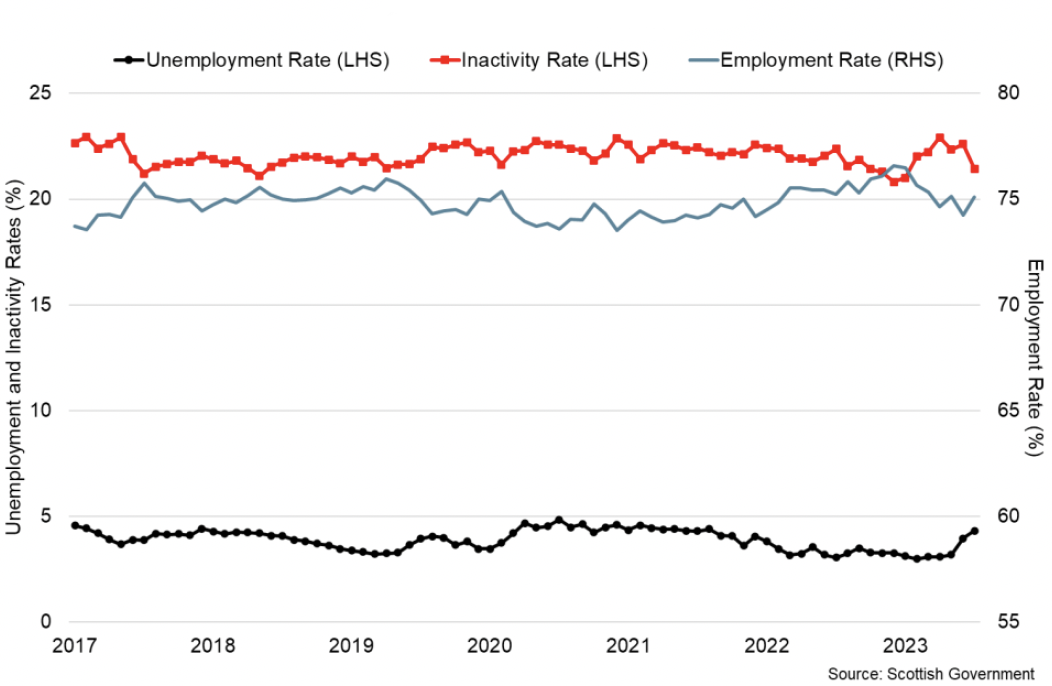
- Wider labour market data indicates recent trends have stabilised with no clear decrease in staffing levels. The number of PAYE employees in Scotland continued its upward trend since the start of the year to 2.5 million, though was largely unchanged over the month of August, while Scotland's claimant count rate remained unchanged at 3.6%.
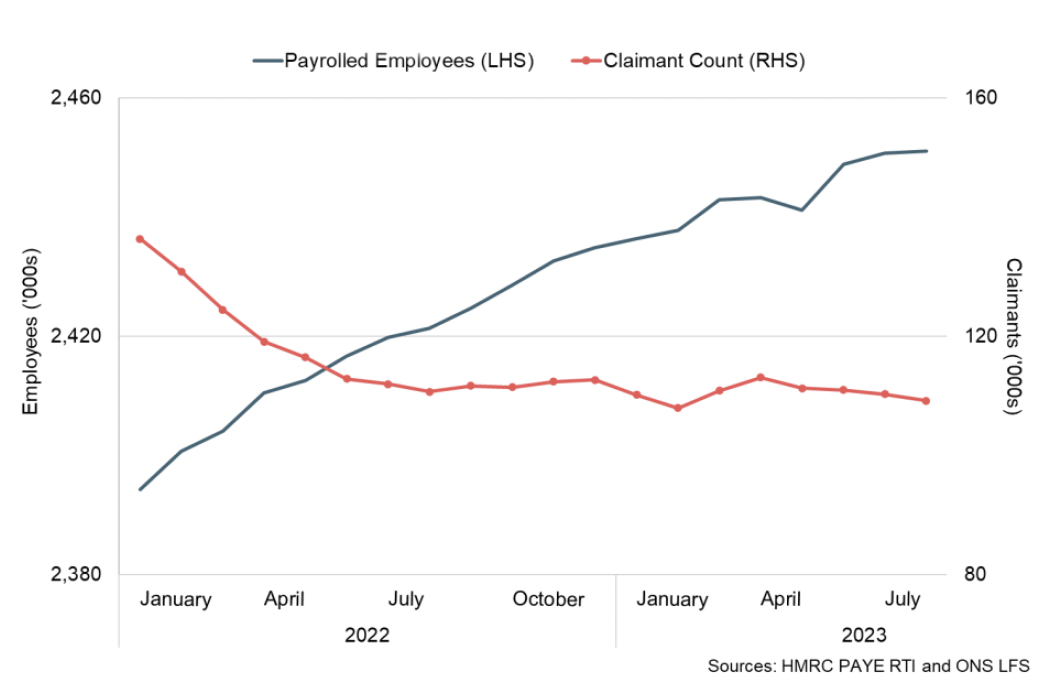
Recruitment Activity
- Business survey data also signal that the extent of tightness in the labour market following the pandemic has cooled slightly over the course of the year as recruitment activity has slowed.
- The RBS report on Jobs for August signalled that growth in permanent staff placements fell over the month and has been largely negative since the start of the year following a period of robust growth over 2021 and 2022. This reflects a general slowing in the growth in vacancies, which contracted in August for the first time since the start of 2021.[19]
- Respondents reported the contraction in staff placements was due to weaker economic conditions and skilled labour shortages.
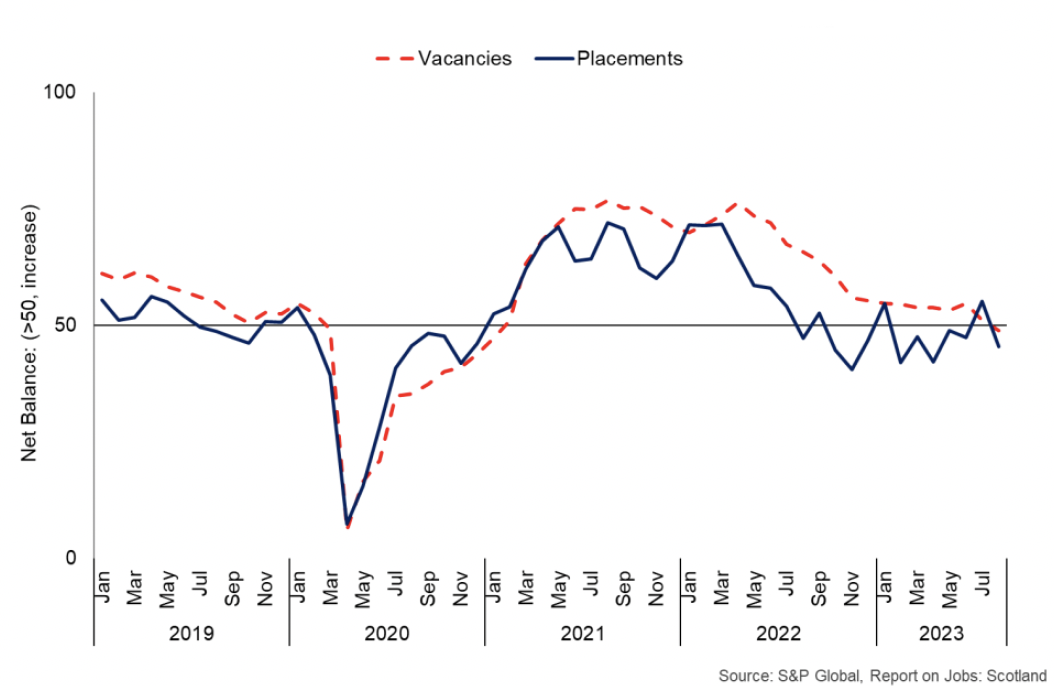
- BICS data provides further insights on labour shortages and recruitment challenges across sectors. At the start of September, 33% of businesses reported experiencing a shortage of workers and 34.4% reported experiencing difficulties recruiting employees; both down from their peaks of 44.5% and 42.8% in September 2022.11
- At a sector level, worker shortages remain most reported in Accommodation and Food Services (48%) and Construction (44%), with most businesses (63.5%) reporting that worker shortages led to employees working increased hours or the business was unable to meet demands (41.6%).
- Recruitment difficulties were also most reported in the Construction sector (43.4%) alongside admin and support services (41.8%). Latest data from the start of July shows most businesses responded that a low number of applications (66.4%) and a lack of qualified applicants (53.4%) were reasons for why they experienced difficulties in recruiting employees, while 27.1% reported not being able to afford an attractive pay package to applicants.
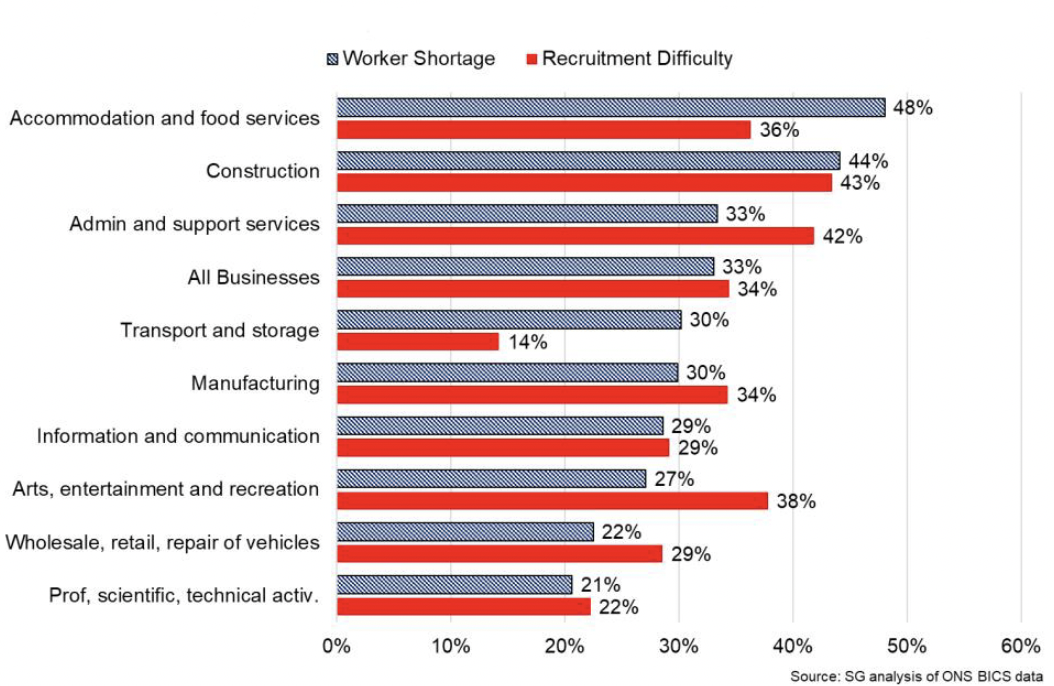
Earnings
- Recruitment challenges, staffing shortages and inflationary pressures have generated upward pressure on earnings over the past year, however there are indications that this has started to ease.
- The RBS Jobs Report for August indicates that growth in starting salaries remains robust (net balance of 61.7), though the pace of growth has softened compared to last year from its peak of 82.8 in March 2022.
- More broadly, nominal median monthly PAYE pay in Scotland was £2,292 in August, up 7.9% over the year. This remains above the average annual growth rate over the past eight years (3.8%), however has slowed from higher rates of growth over the past year, peaking at 9.4% in February.[20]
- Adjusting for inflation, which was 6.7% in August, real median earnings grew 1.1% on an annual basis. This was the fourth consecutive month of positive growth following the period of falling real pay during 2022 and the start of 2023, reflecting the easing in inflationary pressures in recent months.
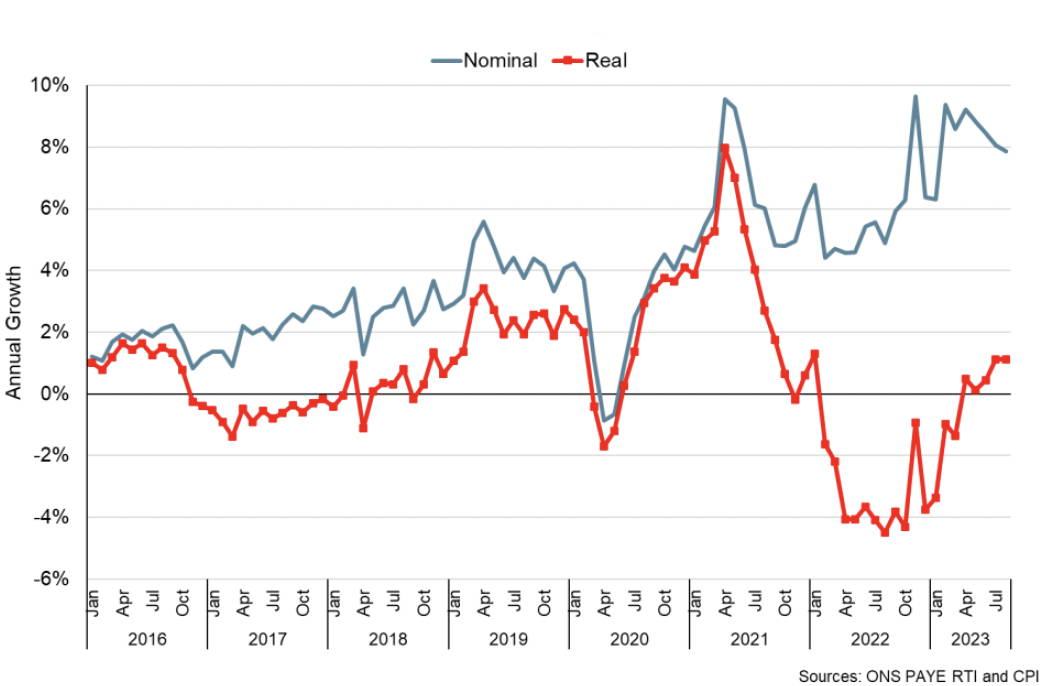
Contact
Email: OCEABusiness@gov.scot
There is a problem
Thanks for your feedback